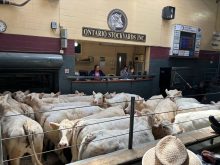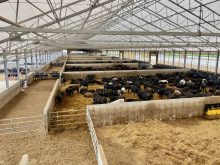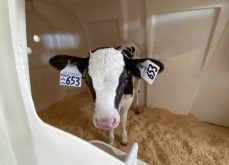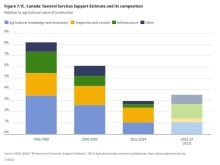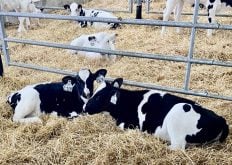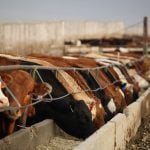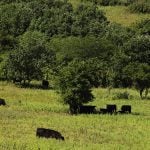The Ontario beef industry ended 2024 on an optimistic note, with record prices, lower feed costs and increased sector interest from young producers.
Why it matters: Ontario’s beef industry saw increased sales and a three per cent increase in heifer retention, but it still faces hurdles to accessing international markets due to SRM restrictions and political uncertainty.
“The price of corn has dropped to its second lowest in the past five years,” said Craig McLaughlin, Beef Farmers of Ontario president, during the Grey Bruce Farmers’ Week Beef Day Jan. 8. “We’re in exciting times because we’ve set record prices, whether it’s fed cattle or people selling calves or yearlings and we see the interest from the young people coming into the business.”
Read Also
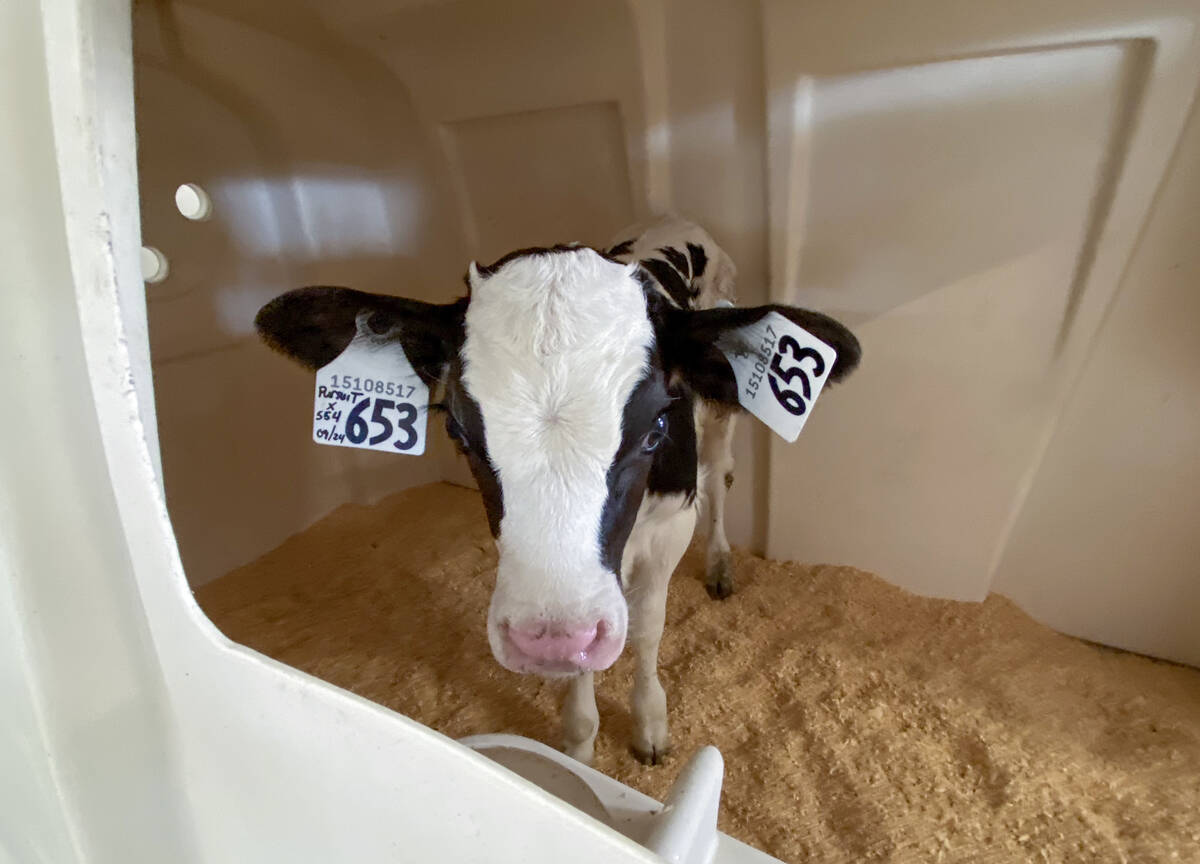
Lactanet turns methane expertise into business opportunity
Lactanet’s new fee-for-service breeding tool initiative to reduce greenhouse gas emissions in Canadian and Swiss Holstein herds will launch in April 2026.
With President Trump’s inauguration looming, Canada’s cross-border relationship was front of mind for BFO representatives during the 2025 Legislative Ag Chairs Summit of State Agriculture and Rural Leaders, held Jan. 3-5 in Des Moines, Iowa.
McLaughlin said many would have preferred Trudeau to hold his position until after Trump’s inauguration to deal with the 25 per cent tariff threat.
“As you look at it, we don’t have a leader at this time; we have a figurehead,” he explained. “But how much influence does Justin Trudeau have, not only with Canadians but Americans too?”
Ontario beef exports increased in 2024, with many cattle transported south during the Cargill strike, said McLaughlin, who sits on BFO’s Joint Marketing Committee, adding foreign market expansion lessens Ontario beef’s dependence on the United States.
BFO hired American economist Dan Sumner to provide a cohesive economic industry study highlighting the proposed tariff’s potential industry impacts to present to the incoming Trump administration.
McLaughlin said inroads for new global markets are expanding as tariff rates change, trade deals are updated, and Trump’s multi-country tariff threats create some degree of uncertainty but could also result in new opportunities.
“We chase wealth. Where is there money to spend (on premium beef)? Saudi Arabia, the Gulf States, Japan — we have to advocate for these markets,” he said.
“We are the only province in Canada that gets beef into Saudi Arabia.”
Resolution to Specified Risk Material (SRM) Harmonization continues to stutter at the Canadian Food Inspection Agency, which McLaughlin attributes, in part, to three leadership rotations throughout the process. BFO has met every CFIA criterion, passed the international review tribunal, moved into negative-low risk status, and regained markets, but it can’t get past the “it’s close” timeline determination.
“(On cattle) over 30 months, it’s costing producers $40 per head for SRM removal,” he said. “It’s in their (CFIA’s) hands. We don’t have a date, but we’re told it’s close.”
The association continues to campaign provincially, federally and internationally for a government vaccine bank, particularly for foot-in-mouth, as well as for amendments to electronic logging device regulations to provide some leeway for livestock transportation if weather or accidents prevent a truck from reaching its destination.
“We have made some gains so that if trucks don’t get there in time for unforeseen circumstances, they can still reach their final destination,” said McLaughlin.
The association lobbied for increased processing capacity and expansion funding for federal and provincial plants and municipal-level tax discrepancies hindering provincial facilities.
“Provincial plants are getting hit hard by taxation from municipalities. Some are taxed on the commercial rate, or industrial rate (and) if it’s built on the corner of the farm, on the farm rate,” he explained.
McLaughlin said BFO approached the agriculture minister about providing taxation relief funding or a rule adjustment for small processing plants to level the playing field for property taxes.
BFO continues to address Provincial Animal Welfare Service (PAWS) Act shortcomings highlighted after PAWS inspectors removed half of eastern Ontario producer Walter Ray’s beef herd in December 2021 without allegations of abuse, distress, or welfare concerns or charges laid. After PAWS sold the herd, Ray was given a $339,000 bill for five months of off-site animal care. He appealed, and the Animal Care Review Board judge lowered it to $14,000. In September 2024, Ray launched a $2 million lawsuit against the officials involved in the intervention.
“This new legislation was rushed in quickly because the SPCA was no longer involved in animal welfare,” explained McLaughlin. “The Peterborough County test case did not go well. We still work with animal welfare services (and) conduct exercises with their inspectors and educate them on the beef industry.”






